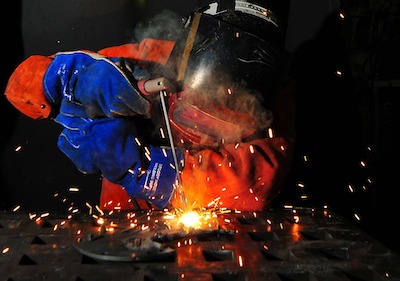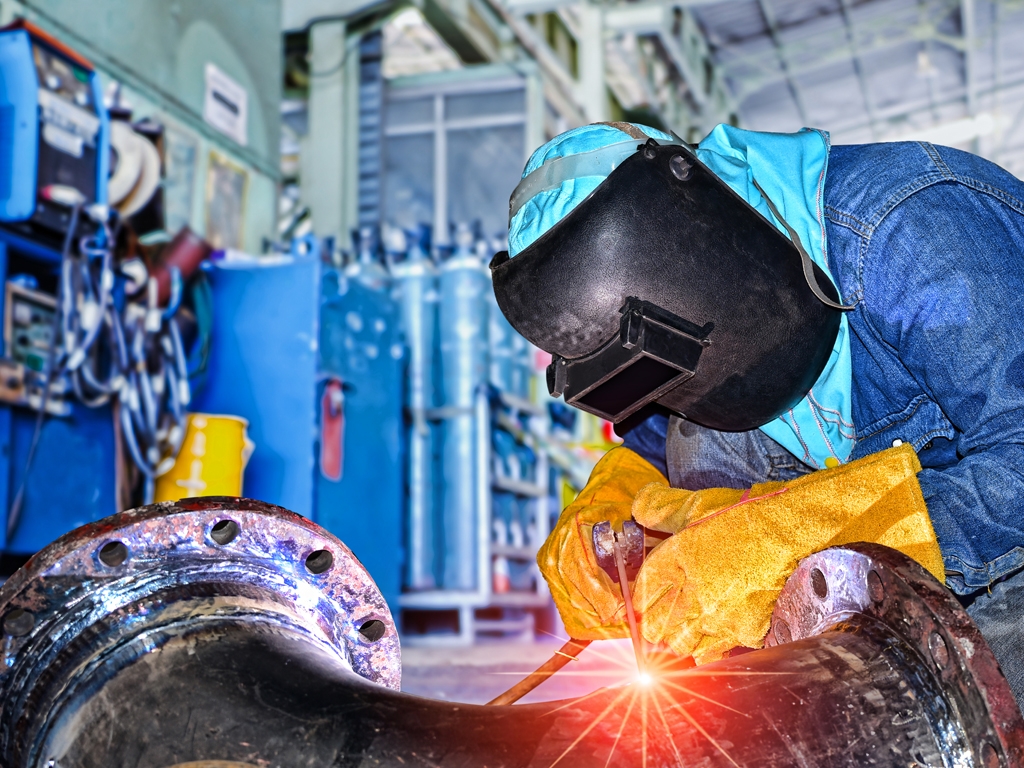All About Welding: Secret Insights Into Techniques and Best Practices for Success
Welding includes a variety of strategies, each suited for particular materials and applications. Understanding these methods, such as GMAW, SMAW, and TIG, is crucial for accomplishing excellent results. The best tools and security methods can not be neglected. As prep work and troubleshooting play important roles in the welding procedure, grasping these aspects can significantly improve the high quality of the final product. What are the essential elements that assure a successful weld?
Understanding Different Welding Methods
Welding strategies encompass a range of approaches, each matched to certain applications and products. Amongst the most usual strategies are Gas Metal Arc Welding (GMAW), Protected Metal Arc Welding (SMAW), and Tungsten Inert Gas Welding (TIG) GMAW, additionally known as MIG welding, is popular for its speed and adaptability, making it ideal for thin products. SMAW, or stick welding, is preferred for its simpleness and effectiveness in outdoor settings, particularly with thicker metals. TIG welding supplies accuracy and control, making it suitable for elaborate job and non-ferrous metals (Montana Mobile Welding and Repair Fabrication). Each strategy has its distinct benefits and considerations, enabling welders to pick the most effective technique based on the task's requirements, material kind, and preferred outcomes. Recognizing these techniques is necessary for effective welding
Crucial Welding Devices and Tools
While different welding methods call for specific abilities, the ideal tools and tools are equally vital for achieving top quality results. Necessary welding devices includes welding makers, which vary relying on the method-- such as MIG, TIG, or stick welding. Safety equipment, including helmets, handwear covers, and aprons, assurances security and comfort during the procedure. Additionally, components and clamps aid protect products in position, making certain accuracy in welds. Consumables like welding poles, cord, and shielding gas are also essential elements that influence the high quality of the weld. Devices such as cutters and grinders promote surface area prep work and post-weld completing, contributing to a specialist end result. Investing in top quality tools ultimately enhances the performance and efficiency of welding projects.
Safety Practices in Welding
Correct safety practices are vital in the welding market to secure workers from possible hazards. Welders should use appropriate individual safety tools (PPE), including safety helmets with proper shading, handwear covers, and flame-resistant garments. Appropriate air flow is important to reduce direct exposure to unsafe fumes and gases generated during the welding process. In addition, workers ought to be learnt the appropriate handling of welding devices to avoid mishaps. Fire precaution, such as maintaining combustible materials far from the welding area and having fire extinguishers conveniently available, are necessary. Routine evaluations of equipment and work spaces can aid identify prospective dangers before they bring about crashes. By sticking to these security techniques, welders can create a more secure working environment and lessen threats related to their trade.
Preparing Materials for Welding
Preparing products for welding is an important action that considerably affects the high quality and stability of the end product (Montana Mobile Welding and Repair Fabrication). Correct preparation entails cleaning the surfaces to get rid of impurities such as oil, rust, and dirt, which can endanger the weld. Methods such as grinding, fining sand, or using solvents are generally employed to achieve a clean surface. Furthermore, ensuring that the materials fit with each other comfortably is vital; spaces can bring about weak welds. It's also vital to think about the positioning and positioning of the parts, as this will certainly affect the convenience of welding and the final end result. Picking the ideal filler product and guaranteeing compatibility with the base metals is vital for achieving strong, long lasting welds.
Tips for Getting High-Quality Welds
Attaining premium welds requires attention to information and adherence to ideal techniques throughout the welding process. Correct joint prep work is essential, guaranteeing surface areas are tidy and cost-free from contaminants. Picking the appropriate filler product and welding strategy based upon the base steels is crucial for perfect bonding. Keeping consistent travel speed and angle while welding can advertise and stop defects uniformity. Furthermore, controlling warm input is essential; excessive warm can bring about warping and weakened joints. If necessary, routinely inspecting the welds during the process allows for instant adjustments. Using suitable post-weld treatments, such as cleaning and stress relief, can improve the longevity and honesty of the weld, ultimately making sure a successful outcome.
Troubleshooting Usual Welding Issues
Welding usually provides obstacles that can impact the top quality and stability of the last product. Common issues such as porosity, irregular weld beads, and overheating can emerge, each calling for details repairing techniques. Recognizing these troubles is crucial for welders to boost their skills and accomplish optimal outcomes.
Porosity Troubles Explained
Porosity can commonly be overlooked, it stays an essential problem in welding that can jeopardize the honesty of a finished product. Porosity describes the visibility of little gas pockets within the weld bead, which can lead and deteriorate the joint to premature failure. This trouble commonly develops from impurities, dampness, or inappropriate protecting gas protection during the welding process. To alleviate porosity, welders need to verify that the base products are tidy and completely dry, use proper protecting gases, and keep regular welding specifications. Routinely checking the devices and atmosphere can likewise help identify prospective issues prior to they manifest in the weld. Resolving porosity efficiently is necessary for attaining strong, durable welds that satisfy top quality requirements.

Inconsistent Weld Beans
Inconsistent weld beads can considerably impact the quality and strength of an ended up item. Numerous aspects add to this issue, including improper traveling rate, wrong amperage settings, and inconsistent electrode angles. When the welder relocates too swiftly, a grain may appear slim and lack infiltration, while moving too gradually can trigger too much accumulation. In addition, using the wrong amperage can lead to either undercutting or excessive spatter, both of which concession weld honesty. The welder's technique, such as inconsistent lantern movement, can also result in irregular grain look. To minimize these problems, welders must concentrate on keeping consistent, controlled motions and making certain proper equipment setups to attain uniformity in their welds. Uniformity is essential to attaining solid and reputable welds.
Overheating and Warping Issues
Excessive warmth during the welding process can lead to considerable getting too hot and buckling concerns, affecting the architectural honesty of the work surface. These issues typically show up as distortion, which can compromise positioning and fit-up, making additional assembly testing. Aspects adding to overheating include the selection of welding criteria, such as voltage and travel rate, as well as the sort of material being bonded. To alleviate these issues, welders ought to keep constant traveling speed and appropriate warm input while checking the workpiece temperature level. Additionally, pre-heating or you could check here post-weld warmth therapy can help relieve anxieties triggered by quick cooling - Welding. Routine examination and adherence to ideal practices are vital in avoiding overheating and ensuring the longevity and reliability of bonded structures
Frequently Asked Concerns
What Are the Profession Opportunities in the Welding Sector?
The welding market supplies diverse job opportunities, consisting of settings as welders, teachers, assessors, and designers. Professionals can function in manufacturing, construction, aerospace, and auto sectors, benefiting from solid demand and affordable wages in numerous functions.
Exactly How Can I Improve My Welding Speed Without Giving Up Quality?
To official statement boost welding speed without giving up quality, one ought to exercise effective techniques, preserve equipment, optimize setups, and boost hand-eye sychronisation. Regular training and looking for comments can additionally greatly add to attaining quicker, top notch welds.
What Accreditations Are Readily Available for Welders?
Various accreditations exist for welders, including those from the American Welding Society (AWS), the National Center for Construction Education and Study (NCCER), and various industry-specific organizations. These qualifications improve employability and demonstrate skill proficiency.
How Does Welding Impact the Qualities of Metals?
Welding affects the properties of metals by altering their microstructure, which can lead to adjustments in stamina, solidity, and ductility. Warmth input and cooling prices during the process substantially influence these material characteristics.
Can I Weld Dissimilar Metals Together?
